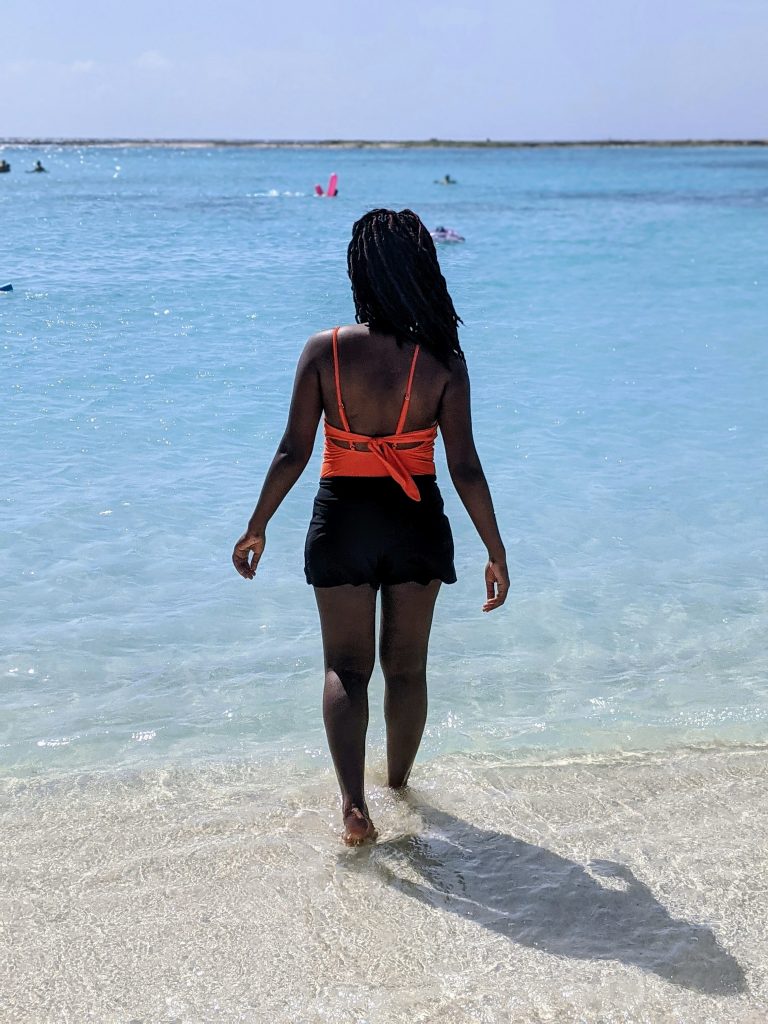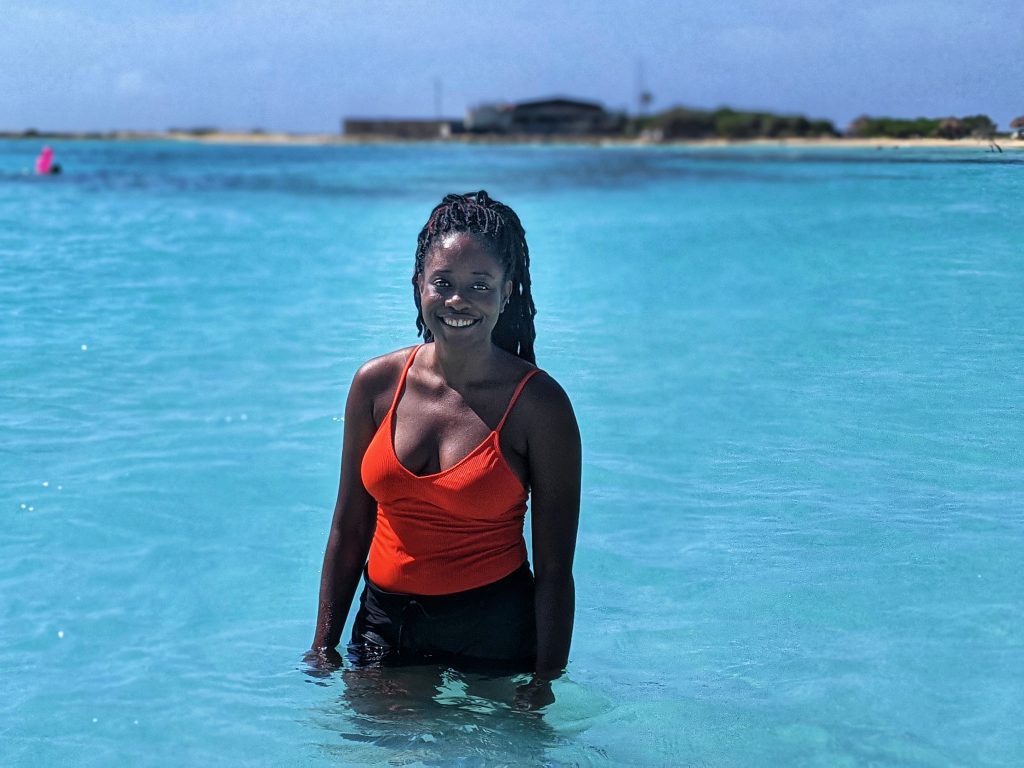There’s more to Aruba than beautiful beaches and palm trees. Head south of the capital to San Nicolas to spend a day in black-owned Aruba.
San Nicolas, Aruba’s second-largest city, is home to many of the island’s black residents and black-owned businesses. Located just a 30 minute drive south of the bustling capital of Oranjestad, it was once a major hub due to its oil refinery. Here’s how to spend a day in this colorful neighborhood, known as the Sunrise City.
Breakfast at Kulture Cafe
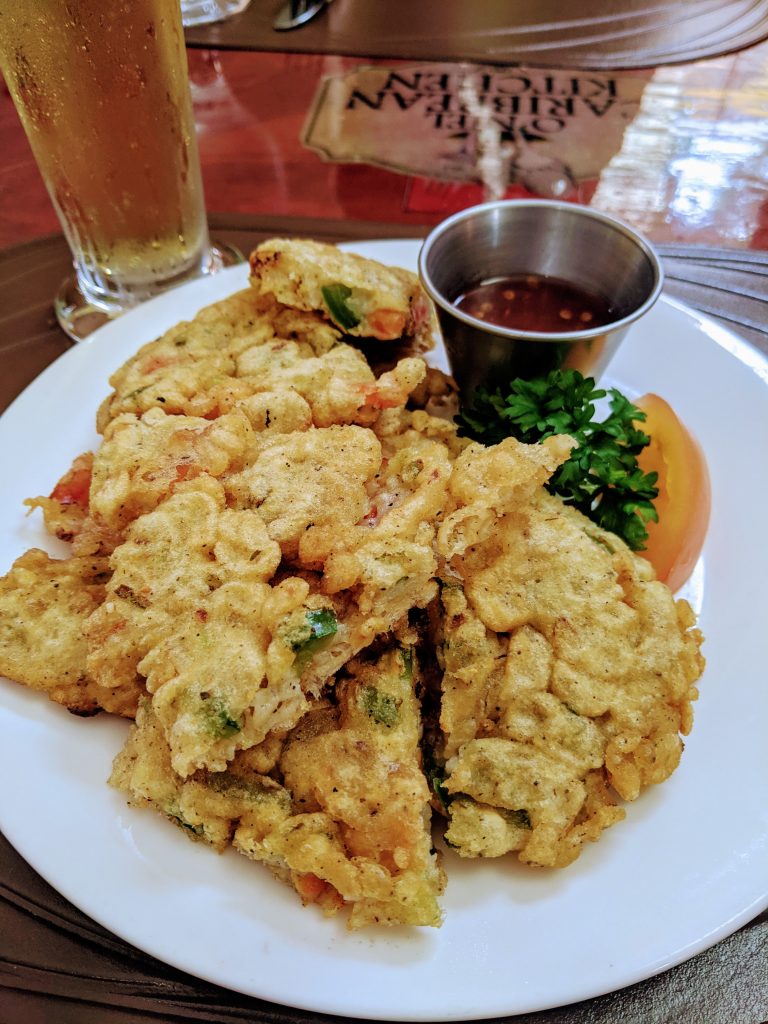
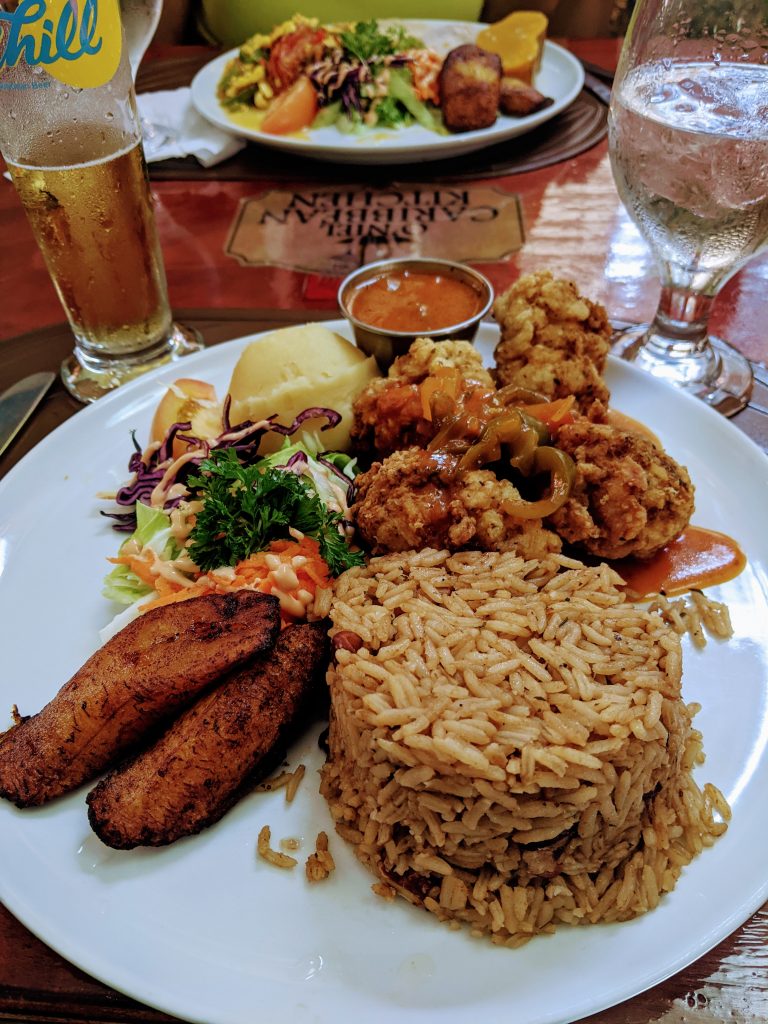
Start your day with a warm coffee and sweet pastry at the delightful Kulture Cafe. Located inside the city’s historic Nicolaas Store, it’s impossible to miss thanks to the bright yellow exterior. Be sure to snap a photo with the iconic Nicolaas Store sign emblazoned on the front.
This cozy cafe is black-owned, run by a young couple, Nicholas and Kedesha. In addition to snacks you can eat on the go, Kulture has an affordable menu of breakfast and lunch staples, as well as ice cream. When my family and I visited in late November 2020, the cafe was celebrating its 1 year anniversary. The staff was friendly and helpful and I enjoyed learning more about the city’s history via the cafe’s walls. A small exhibit showcases historic photos of San Nicolas and details efforts to combat gentrification today.
To learn more about this unique Aruban city, head behind the cafe to the San Nicolas Community Museum.
San Nicolas Community Museum

Opened in 2013, the San Nicolas Community Museum is housed in the same historic building as Kulture Cafe, in the heart of downtown. This small museum consists of two rooms filled with artifacts and memorabilia donated by local residents. They tell the story of the neighborhood’s development and provide insight into how residents lived.
Be sure to call ahead and confirm the museum’s hours; when I visited it was closed, despite the website stating otherwise.
Pit Stop at the Water Tower
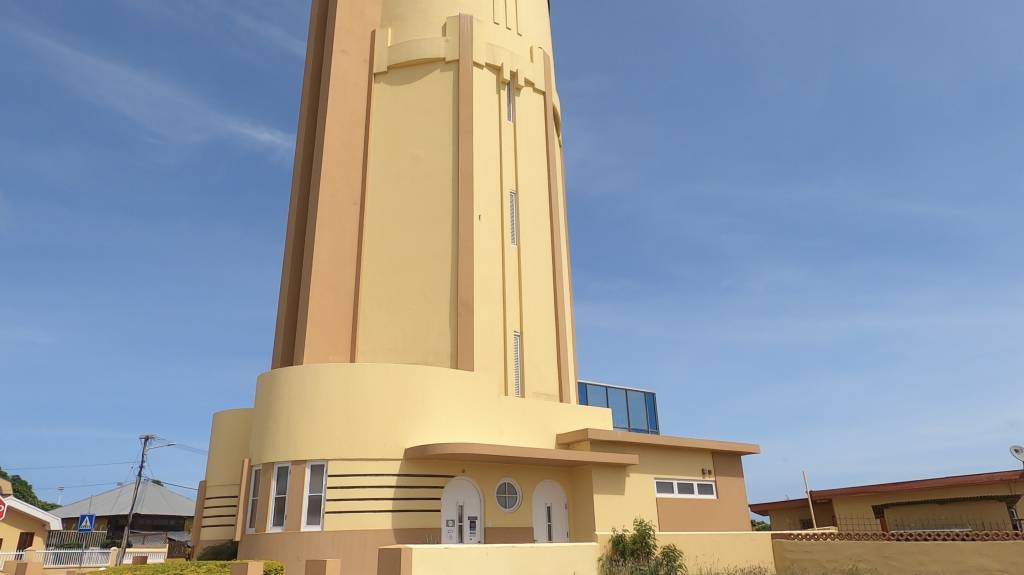
A few short blocks away is another bright yellow monument, the San Nicolas Water Tower. Completed in 1939, this tower helped supply water to much of the island for a number of years. In yet another remarkable example of reusing and recycling, the tower was renovated and turned in to the Museum of Industry in 2016. This museum showcases the many industries that flourished on the island in the past and present: gold, aloe, phosphate, and tourism.
Lunch at O’Niel Caribbean Kitchen

Chances are you’ve worked up an appetite by now. A meal at O’Niel Carribean Kitchen is an absolute must. My family loved it so much we visited twice! This black-owned restaurant is often filled with locals, so you know the food is good.
Run by Oneil Williams, a Jamaican chef who has been living in Aruba for 20 years, the menu features Jamaica staples like ackee and saltfish, along with local dishes. The saltfish fritters and Aruban fried fish balls were my favorites.
Street Art Photo Shoot
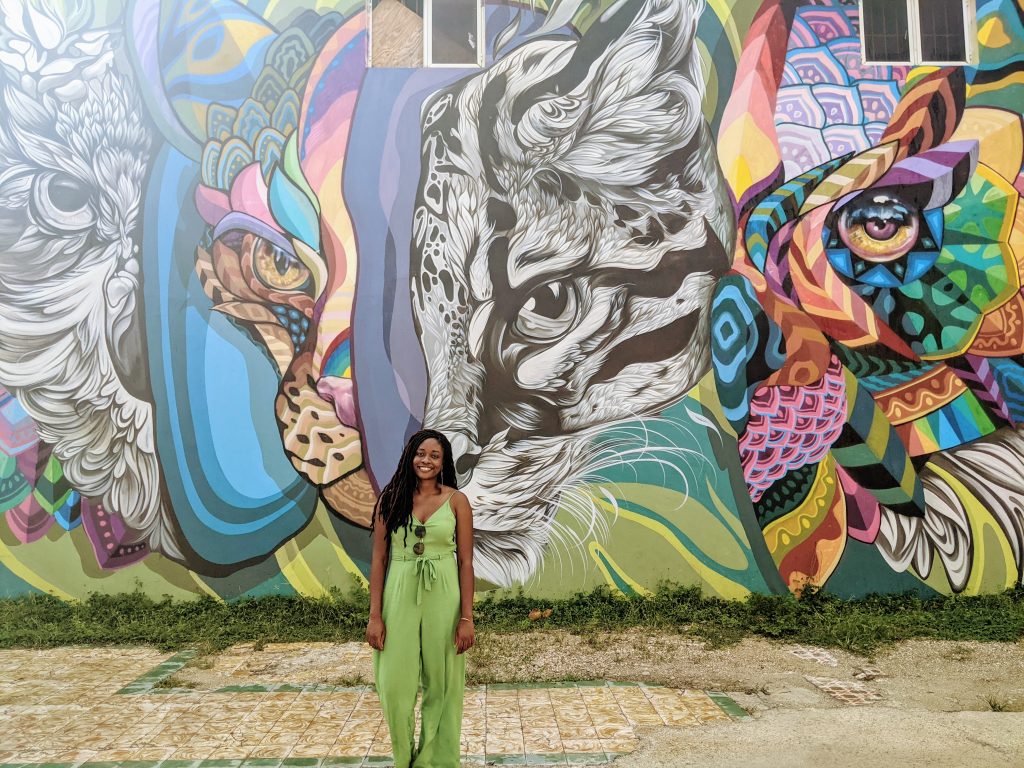
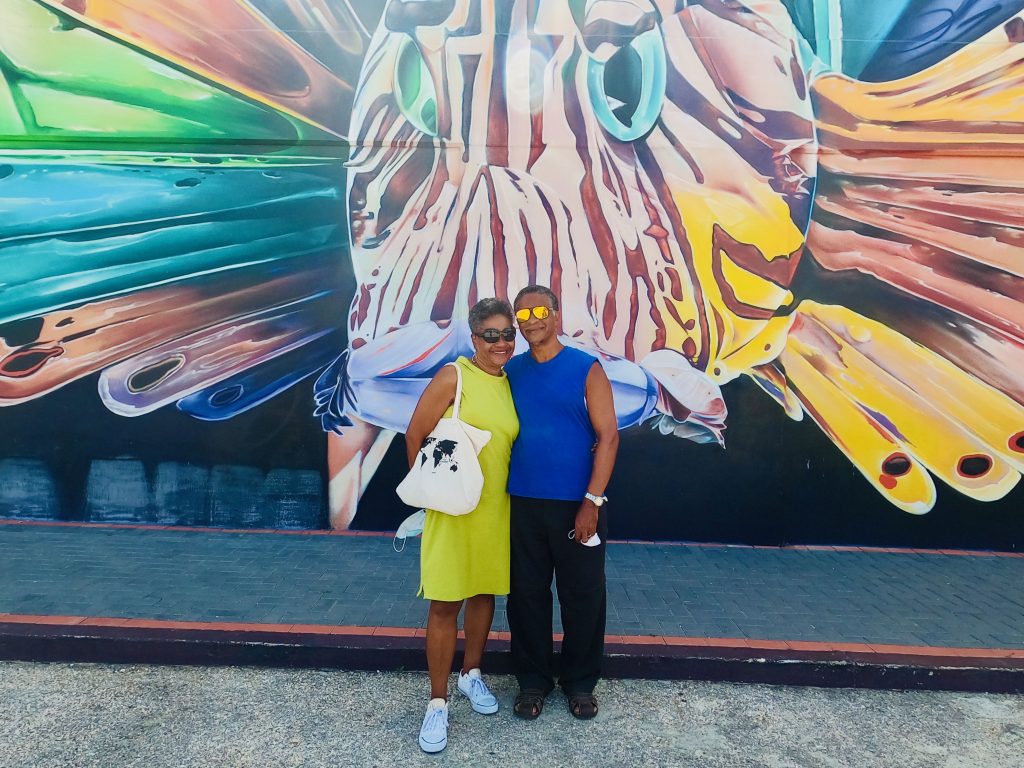
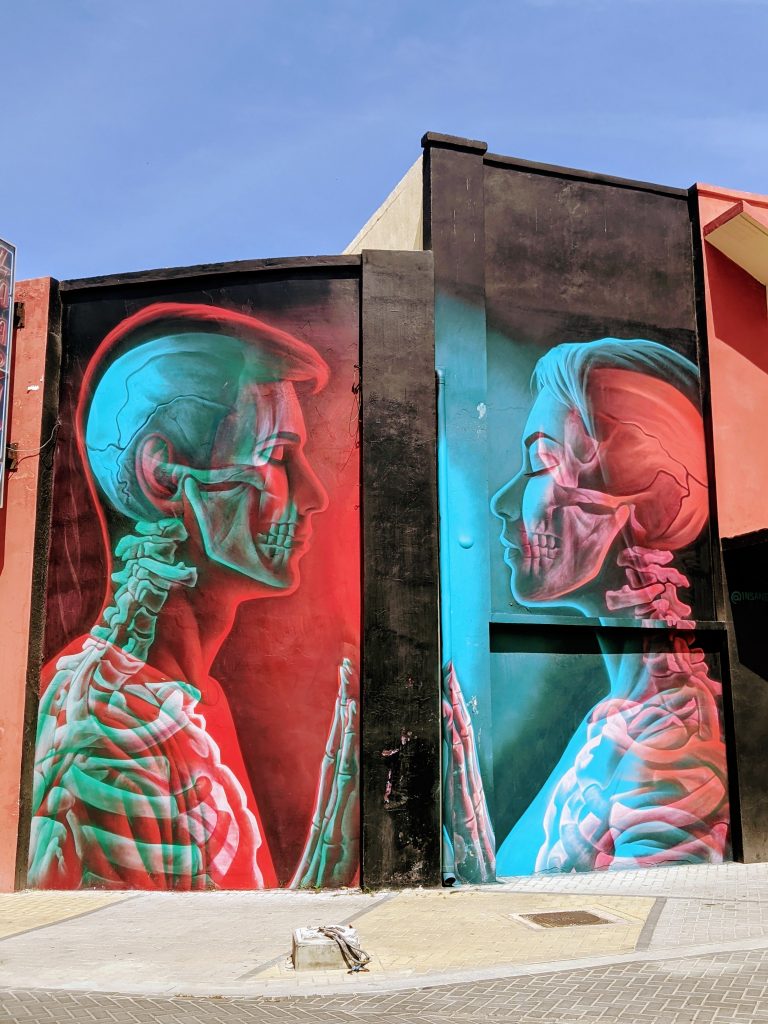
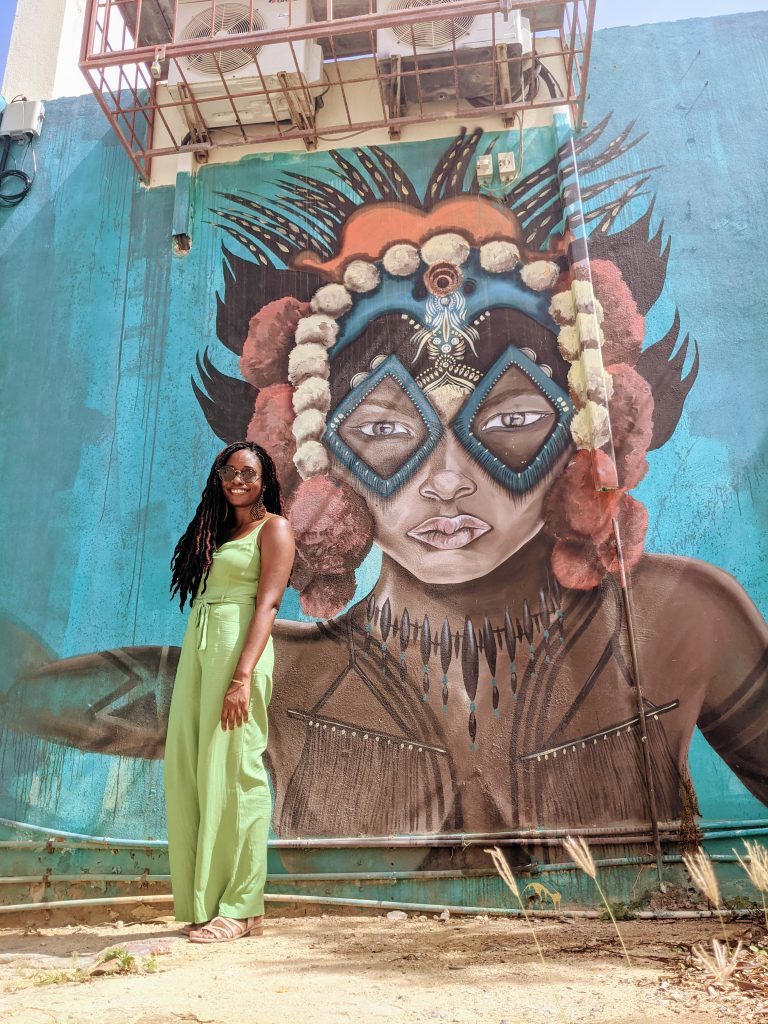

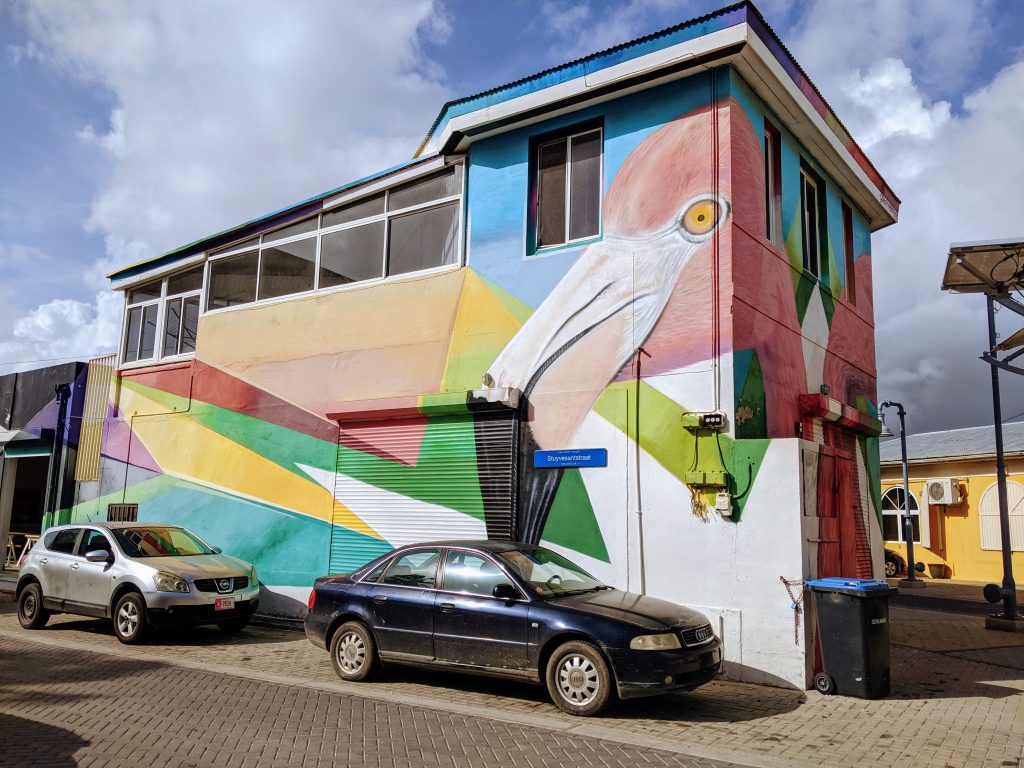
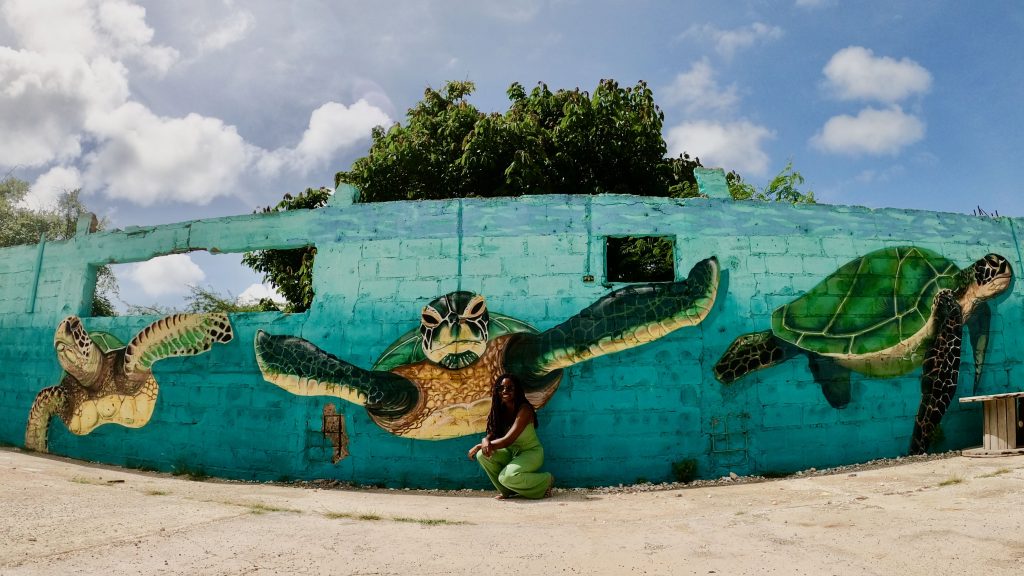
Now that you’ve refueled, it’s time for a mini-photo shoot with San Nicolas’ world famous street art. These pieces are a result of the Aruba Art Fair, which invites international artists to the island to create new works. The fair was started in 2016 as a way of revitalizing the area and transforming it into an arts district, and it is certainly working.
Many of the pieces are located in a four block radius. Some of my favorites include: One Happy Art Island, rainbow-colored cat/owl (located across from O’Niel’s), sea turtle trio and the flamingos.
If you’d like to learn more about the artists and inspiration behind each piece, consider joining one of Aruba Mural Tours daily offerings.
Sunset at Baby Beach
Due to the pandemic, the monthly Island Festival, which provides a taste of Carnival on the last Wednesday of each month, is on hiatus.
Instead, end your day at one of Aruba’s most popular beaches: Baby Beach. This calm lagoon is popular with families thanks to its shallow, clear blue waters. Another spot this is popular with Aruba residents, it’s the perfect place to people watch and take in a stunning Aruban sunset.
